by Dave Waddell
Nine Butte County sheriff’s deputies, a majority of them armed with assault rifles, fired a total of 63 rounds two years ago at Richard Moulton, a 52-year-old Red Bluff businessman, killing him.
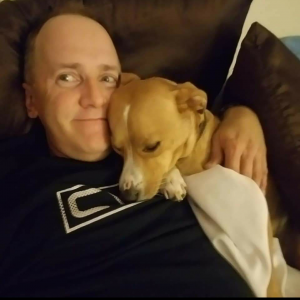
Recently, Seth Stoughton, a use-of-force expert who testified at the trial of George Floyd’s police killer, expressed concern about what seems to have been “contagious fire” from multiple deputies in the killing.
Stoughton said he found the Moulton shooting generally justified and that 63 shots “doesn’t strike me as an absurd amount” given that nine officers were pulling triggers. “I’m not surprised that officers shot him if he pointed the weapon at [them], especially if they knew he had shot at his estranged wife earlier,” Stoughton said.
But descriptions in investigative reports suggest at least two relatively inexperienced deputies hit Moulton with what could be classified as “contagious fire,” also known as “reflex fire” or “sympathetic fire.”
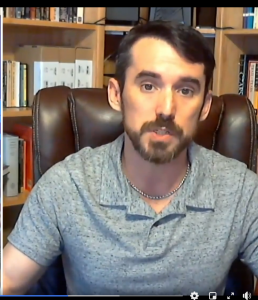
Stoughton, an ex-cop and associate law professor at the University of South Carolina, testified as an expert for the prosecution April 12 in the trial of former Minneapolis police officer Derek Chauvin. A jury found Chauvin guilty April 20 of murder and other charges in Floyd’s death.
Stoughton was asked by ChicoSol for his observations after being sent information, including a synchronized video of deputies’ body camera footage, about the Jan. 28, 2019, Moulton killing.
Moulton, acting way out of character, left Butte County sheriff’s deputies no choice but to shoot him when he pointed a pistol in their direction, Butte County District Attorney Mike Ramsey ruled recently. In an officer-involved shooting (OIS) investigation handled with extraordinary delay and secrecy, Ramsey labeled Moulton’s killing a “suicide by cop.”
Moulton’s body was riddled with more than two dozen entry wounds, including one bullet hole seemingly centered in the middle of his forehead. The ammo clip for Moulton’s Glock was fully loaded, but there was no bullet in the gun’s chamber, nor did he shoot at deputies, Ramsey said. Moulton earlier had assaulted his estranged wife and then unloaded a pistol in her direction.
‘Contagious fire’ defined
Stoughton, in his book “Evaluating Police Uses of Force,” defined contagious shooting as “when officers fire in response to what they perceive to be gunfire, including gunfire that they know to originate from another officer, rather than in response to an independently perceived threat. Although reflex fire is often offered as a way to explain a high volume of shots, reflex fire is not, in most situations, a sufficient justification for intentionally using deadly force. Each application of force – that is, each shot, or each set of shots in a compressed period – must be justified by the circumstances that observably exist at the time.”
The most extreme example of what seemed to be contagious fire in the Moulton shooting came from Tristan Harper, a two-year deputy at the time. Harper fired his assault rifle more than any other officer: 12 times, including multiple rounds into the fender of the sheriff’s vehicle he had started out shooting over. Harper, who did not shoot until after hearing gunfire, told investigators he could not see Moulton’s hands, “which is the very definition of reflex fire,” commented Stoughton, a former Tallahassee police officer and state investigator in Florida, in an email interview with ChicoSol.
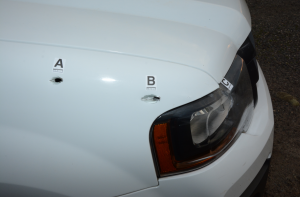
In a Sheriff’s Office internal affairs report, Harper was the only deputy among the nine shooters listed as having had military service.
Ty Dentinger, like Harper a deputy with two years of experience who was standing next to Harper in similar visual circumstance, shot his handgun six times at Moulton. Like Harper’s, Dentinger’s view of Moulton’s hands was blocked by the bed of Moulton’s pickup, Dentinger told investigators. Both Harper and Dentinger said they shot to kill Moulton because they “believed” he was shooting at other deputies – an assumption that turned out to be wrong.
The Moulton killing was investigated by the Butte County Officer Involved Shooting/Critical Incident Protocol Team, which Ramsey directs and is composed of detectives from various law enforcement agencies in the county. Though that team has investigated three dozen law enforcement killings during Ramsey’s tenure as DA, its reports have never recommended any criminal charges against any officer. (Among those exonerated by Ramsey after the protocol team’s investigation was Paradise police officer Patrick Feaster, who was later prosecuted by Ramsey for involuntary manslaughter but only after a video of his 2015 shooting of unarmed Andrew Thomas went viral and stirred much public outrage and ridicule.)
The protocol team’s interview of Harper was conducted primarily by officer Cody Uebelhardt from Chico PD. Uebelhardt’s report summarizing the interview gives no indication that Harper was even asked about shooting the sheriff’s vehicle. Harper thought he had shot his AR-15 about five times, far less than his actual 12 trigger pulls.
Butte County Sheriff Kory Honea contends that “the evidence strongly supports the [protocol team’s] conclusion that each deputy independently possessed an objectively reasonably belief, based on their perceptions and the totality of the circumstances, that Mr. Moulton presented an imminent threat of death or serious bodily injury to themselves or other deputies when the shots were fired.”
The Moulton killing was handled with unusual secrecy by Ramsey and Honea. Most law enforcement agencies, including the Sheriff’s Office in the past, identify personnel involved in an OIS within a couple of days of the incident. It took Honea, however, about six weeks to name the nine Moulton shooters. As recently as October 2020 – 21 months after the killing — attorneys for the county denied a public records request for Moulton case documents, claiming the shooting was still under investigation.
The shooting officers — with their rank at the time of the Moulton incident, their weapons and number of shots fired in descending order — included:
–Deputy Harper, .223 caliber semi-auto rifle, 12 shots.
–Sgt. Bradley Meyer, .223 caliber semi-auto rifle, 8 shots.
–Detective Ben Cornelius, .45 caliber submachine gun, 8 shots.
–Detective Paul Brodie, .223 caliber semi-auto rifle, 8 shots.
–Deputy Mariah Smith, 9mm semi-auto pistol, 7 shots.
–Detective Angelo Tavelli, .223 caliber semi-auto rifle, 6 shots.
–Deputy Dentinger, .40 cal. semi-auto pistol, 6 shots.
–Sgt. Joshua Brazzi, .223 caliber semi-auto rifle, 5 shots.
–Detective Jake Smith, 9mm semi-auto pistol, 3 shots.
Ramsey secretive
Ramsey waited nearly two years to release his report on the Moulton killing, by far the longest he has ever taken to officially rule on an OIS. Quite uncharacteristically, he posted the report online in December without telling anyone – outside of law enforcement, at least — that it was finished. The DA also did not hold his usual press conference explaining the report and taking journalists’ questions, or even issue one of the many press releases that flow regularly to the news media from his office.

Butte County DA Mike Ramsey
In contrast — and in line with the DA’s standard operating procedure — Ramsey’s report on the Chico Police Department killing of Stephen Vest in October 2020 was finished in three months and presented at a news media briefing in January. (Stoughton, the use-of-force expert, after viewing a synchronized body-cam video of the Vest killing, told ChicoSol that he thought excessive shots were fired by Chico police.)
Moulton’s brother, Nathan Moulton of Redding, said he spoke with his father Jack and sister Mindy about the killing.
“We hold no ill feelings towards the police who took Richard’s life, and we hope they are doing OK,” Nathan Moulton said. “The police had to be extra careful because they did not know that Rich did not load a bullet into the chamber and if he [had] pulled the trigger no bullet would have come out of the gun. … We understand Rich gave them no other choice. … Whenever we think about Richard’s life we think about 52 years of good times where he made all of us crack up laughing.”
Nathan said no one he’s spoken to within the Moulton family believes that Richard was trying to kill his estranged wife, Cathy Moulton. Shortly after being shot at, Cathy Moulton told a Red Bluff officer: “I don’t think he wanted to hurt anyone, but I think he will kill himself … because he’s got a gun, never been to jail. He just snapped.”
Nathan said Moulton family members “do not believe in the attempted murder nonsense,” though “no one disputes ‘suicide by police’ in this family.”
Richard Moulton was president of a computer-servicing company that had among its clients the Red Bluff Police Department. Ramsey’s report does not mention any criminal history on Moulton’s part, though he was under the influence of methamphetamine on his death day. His son told investigators that Moulton bought the Glock handgun he died with from a Red Bluff-area peace officer. He had suffered a debilitating heart attack in the previous year and both he and his business were in declining health.
On Jan. 28, 2019, while at his estranged wife’s residence, Moulton raged during an argument.
According to Ramsey’s report, “She described Moulton [as] acting out of character that morning and was extremely violent. She said he attacked her by slapping her, attempting to bite her face, biting her finger and choking her.” Moulton then retrieved a semi-automatic pistol from his pickup, “put the gun in her mouth and claimed he was going to kill her.”
After Cathy Moulton broke away, Richard is accused of shooting at her nine times, missing her but sending bullets flying through her home.
The be-on-the-lookout bulletin put out by Red Bluff PD accused Moulton of attempted murder. His maroon pickup truck was spotted by Sgt. Brazzi driving southbound on the Midway through Durham. Brazzi followed as other deputies sped to back him up. When Brazzi tried to pull Moulton over, Moulton led deputies on a 17-mile, low-speed pursuit before finally pulling over along Highway 162 in the Richvale area.
At one point Moulton held his pistol out the driver’s side window by its barrel, which some deputies initially thought might be a surrender sign. Once stopped, Moulton swiveled his legs outside the vehicle. He twice moved the gun from his side and pointed it at his head while looking back at deputies, the closest of whom were fanned out to his left between 50 and 80 feet away, according to Ramsey. As Moulton rose out of the vehicle, the gun at his side was pointed at some of the deputies, they told investigators. Video from seven deputies’ body cameras does not give a clear view of Moulton’s last actions.
Second OIS for two officers
Two of the officers who shot at Moulton – Cornelius and Brazzi — were involved in previous officer-involved killings in Butte County.
On May 18, 2014, Cornelius killed 24-year-old Cory Bush with an assault rifle. Deputies had been dispatched to Bush’s Palermo-area residence because he was “going crazy” while carrying a pellet gun that resembled a .22 caliber rifle. While en route, deputies were told about the pellet gun and informed that Bush “made statements about wanting to die [and] mentioned suicide by cop,” according to Sheriff’s Office records.
Responding to deputies’ commands, Bush dropped the pellet gun but picked it up again after a police dog failed to “apprehend” him. Cornelius claimed Bush pointed the gun at his forehead from 15 to 20 feet away. At about the same moment another deputy yelled “Taser!” to warn Bush of a stun gun, Cornelius shot Bush three times. Bush’s pellet gun turned out to be unloaded, its barrel caked in dirt, according to a report by a state Department of Justice criminalist. Victoria Moseley, Bush’s fiancée, disputed deputies’ accounts of the shooting, telling the Enterprise-Record: “I don’t believe bringing an AR-15 to a suicide call was appropriate.”
Cornelius was selected by Sheriff Honea as his Butte County deputy of the year for 2015.
At the Moulton killing, Cornelius held his unleashed and barking police canine, Solo, by the dog’s collar with one hand while firing a submachine gun eight times with the other, which Stoughton called “a recipe for inaccuracy.”
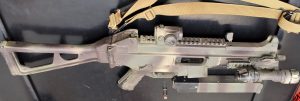
“If the dog pulls hard and unexpectedly,” Stoughton wrote, “there might be no telling where that next bullet is going.”
Honea responded that dog handlers are required to maintain control over their “police service dogs, while at the same retaining the ability to defend themselves and others against threats, including situations involving the threat of deadly force. To that end … Sheriff’s Office … handlers, including … Cornelius, have trained in discharging their firearms single-handedly.”

Butte County Sheriff Kory Honea
After Moulton was felled and the shooting stopped, Cornelius was denied permission by a lieutenant to release Solo, a Belgian Malinois, as “a distraction in case [Moulton] was still armed and able to harm deputies,” according to a summary of an investigator’s interview of Cornelius. Stoughton agreed with the lieutenant’s call.
“When someone is down (after having been shot) but officers don’t see a weapon, it’s not at all uncommon for officers to ‘check’ to see if the person is a threat,” Stoughton wrote. “They might do so with a less-lethal launcher (using a beanbag or a 40mm baton round). I would strongly advise against doing so with a canine, though, both because of the inherent unpredictability of a canine and the relative damage that can occur if the canine bites and thrashes its head.”
Cornelius was promoted from detective to sergeant following the Moulton shooting.
Sgt. Brazzi’s previous OIS was the Sheriff’s Office most recent before Moulton’s death. On Nov. 12, 2018, Brazzi was one of five officers who shot and killed GD Hendrix in an incident that was similar to the Moulton case in that it involved a vehicle pursuit followed by what authorities called a “suicide by cop.” Unlike Moulton, Hendrix, wanted for a parole violation, did not have any weapons. He did, however, have a history of gun violations and an officer earlier had reported hearing a “click” from inside Hendrix’s vehicle.
After Hendrix’s car was disabled with spike strips, Brazzi tried to communicate with him. Brazzi told investigators that he ordered other officers who were shouting over each other to “shut up.” He then addressed Hendrix as “GD” several times and as “bud” at least once. Believing Hendrix armed, Brazzi said he wanted Hendrix to show his hands but not get out of the car. Instead, Hendrix stepped out and waved a six-inch pipe in his right hand that officers thought was a gun. Brazzi, who believes he was the first to shoot Hendrix, fired five times – the same number of shots attributed to Brazzi in the Moulton incident.
Weapons of war
Two Sheriff’s Office detectives who shot at Moulton, Brodie and Tavelli, used M-16 assault rifles obtained as surplus weapons from the federal government. (Between 2006 and 2014, Butte County law enforcement agencies reportedly received in military surplus about 150 assault rifles, 60 pieces of night-vision equipment, four helicopters and one so-called MRAP, a mine-resistant, ambush-protected vehicle.)
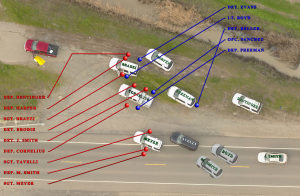
Nathan Moulton has no complaints about the weaponry used on his brother.
“This was not a routine traffic stop,” he said. “The police had the right to extra firepower in that situation.”
Force expert Stoughton said he thinks there is a place for militarized weapons and tactics in policing but that their overuse needs to be carefully guarded against.
“Responding to a man with a gun — especially if he’s known to have shot at someone — is an acceptable justification to deploy a patrol rifle,” Stoughton wrote. “Rifles are accurate at longer range than handguns, so the idea would be to allow officers to still maintain lethal cover without being as close as they might need to be to effectively do so with a handgun. Here, it seems like they were closer than they had to have been with rifles deployed, but the fact that rifles were deployed seems okay.”
Dave Waddell is a contributor to ChicoSol who writes about policing and criminal justice.

63-0, WOW! Unfortunately, this is not the score of any game. This is the number of shots fired at Richard Moulton in the last three seconds of his life by nine BC sheriffs. Are these “peace officers” trained in de-escalation strategies? Watching the BWC video DA Ramsey posted to his website, I did not see a gun in Moulton’s hand. Maybe Moulton was simply sliding out of the driver’s seat of his pickup truck to surrender?
Professor Seth Stoughton, a nationally recognized expert on the reasonable use of lethal force by police, had concerns about the actions of the “peace officers.”
“Peace officer” Cornelius is allowed to hold back a K9 officer in one hand and fire eight shots with a .45 CALIBER SUB-MACHINE GUN, RAMBO STYLE? …WOW! Honea says “dog handlers are required to maintain control over their “police service dogs,” while at the same retaining the ability to defend themselves and others against threats, including situations involving the threat of deadly force. To that end … Sheriff’s Office … handlers, including … Cornelius, have trained in discharging their firearms single-handedly.” Remember ChicoSol readers, Moulton is a CIVILIAN wanted for questioning, not the enemy in a combat theatre! What about the “peace officer” Harper’s shooting 12 rounds from his semi-auto rifle in the direction of Moulton WITHOUT A CLEAR VISUAL OF MOULTON resulting in the friendly fire damage to a sheriffs vehicle? How can that be overlooked and approved by the DA and Honea? Could these wild shots have hit a fellow “peace officer?”
DA Ramsey waits two years to issue his report, why? Is he afraid to disclose the facts shocking facts? Was he crafting the report to his preferred conclusion of justification as a “suicide by cop?” Is the DA a mind reader? How can the DA know the intent of Moulton? ChicoSol readers need to view the BWC recordings and read the delayed DA report and ask themselves if Moulton should have been arrested or killed? Was an attack the appropriate use of lethal force? Is the DA report impartial? Is it a conflict of interest for the DA to use his handpicked protocol investigators to investigate this killing? Is there any civilian involvement as a check and balance to ensure transparency in the investigative process? Is the fox guarding the hen house?
The good people of Butte County need to press Honea and Ramsey for answers. Thank you Dave Waddell for this thorough, revealing, and shocking article.